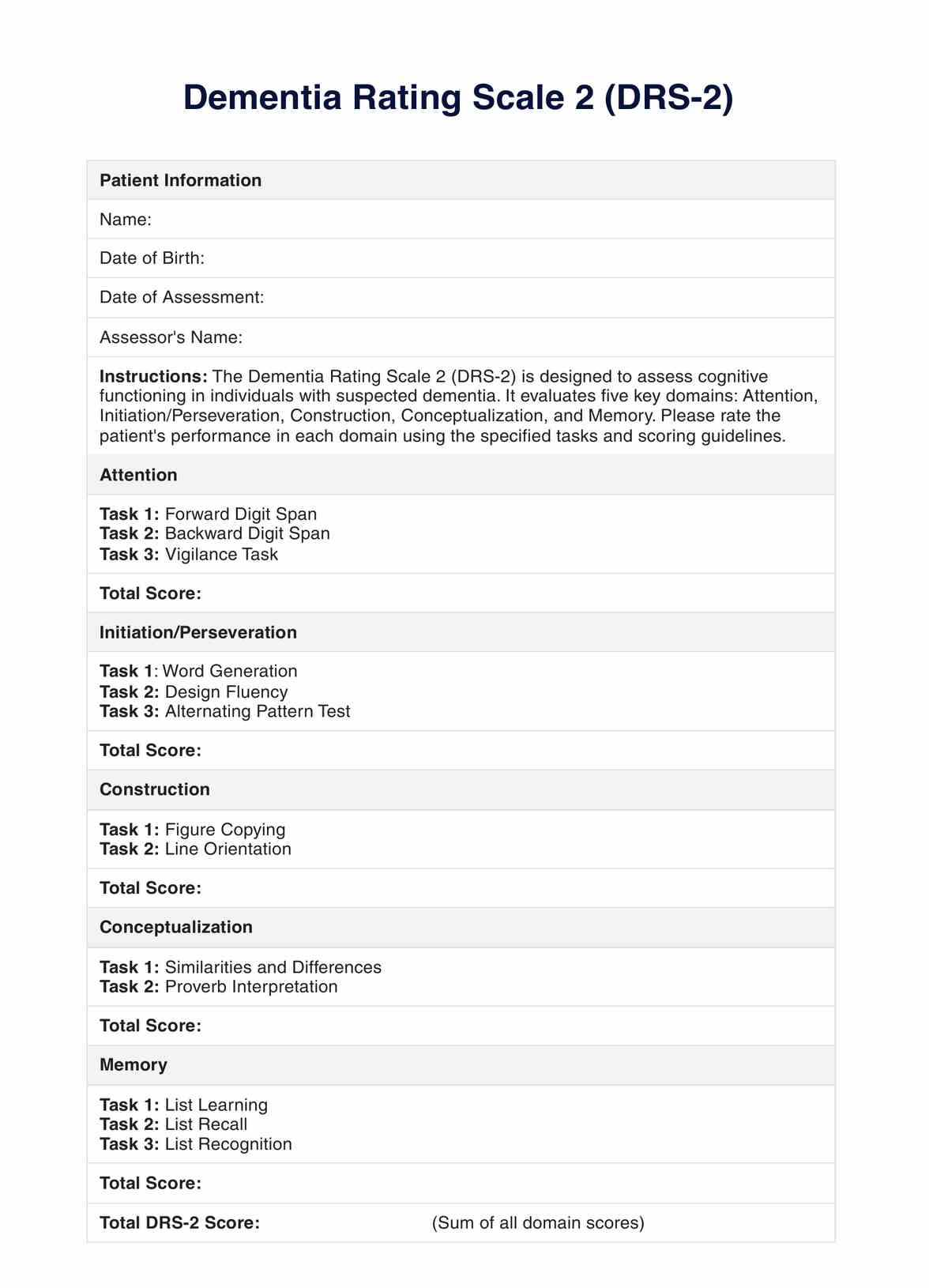The DRS-2 is a clinical tool used to assess cognitive functioning in individuals with suspected dementia, evaluating five cognitive domains.

Dementia Rating Scale 2
Explore the Dementia Rating Scale 2 (DRS-2) with our free download. Understand its role in diagnosing and managing dementia, interpret results, and discover treatment options.
Use Template
Dementia Rating Scale 2 Template
Commonly asked questions
The DRS-2 is used alongside medical history and other cognitive tests to assess mild cognitive impairment and diagnose dementia.
Yes, the DRS-2 can help differentiate between various forms of dementia based on the pattern of cognitive impairment.
EHR and practice management software
Get started for free
*No credit card required
Free
$0/usd
Unlimited clients
Telehealth
1GB of storage
Client portal text
Automated billing and online payments











